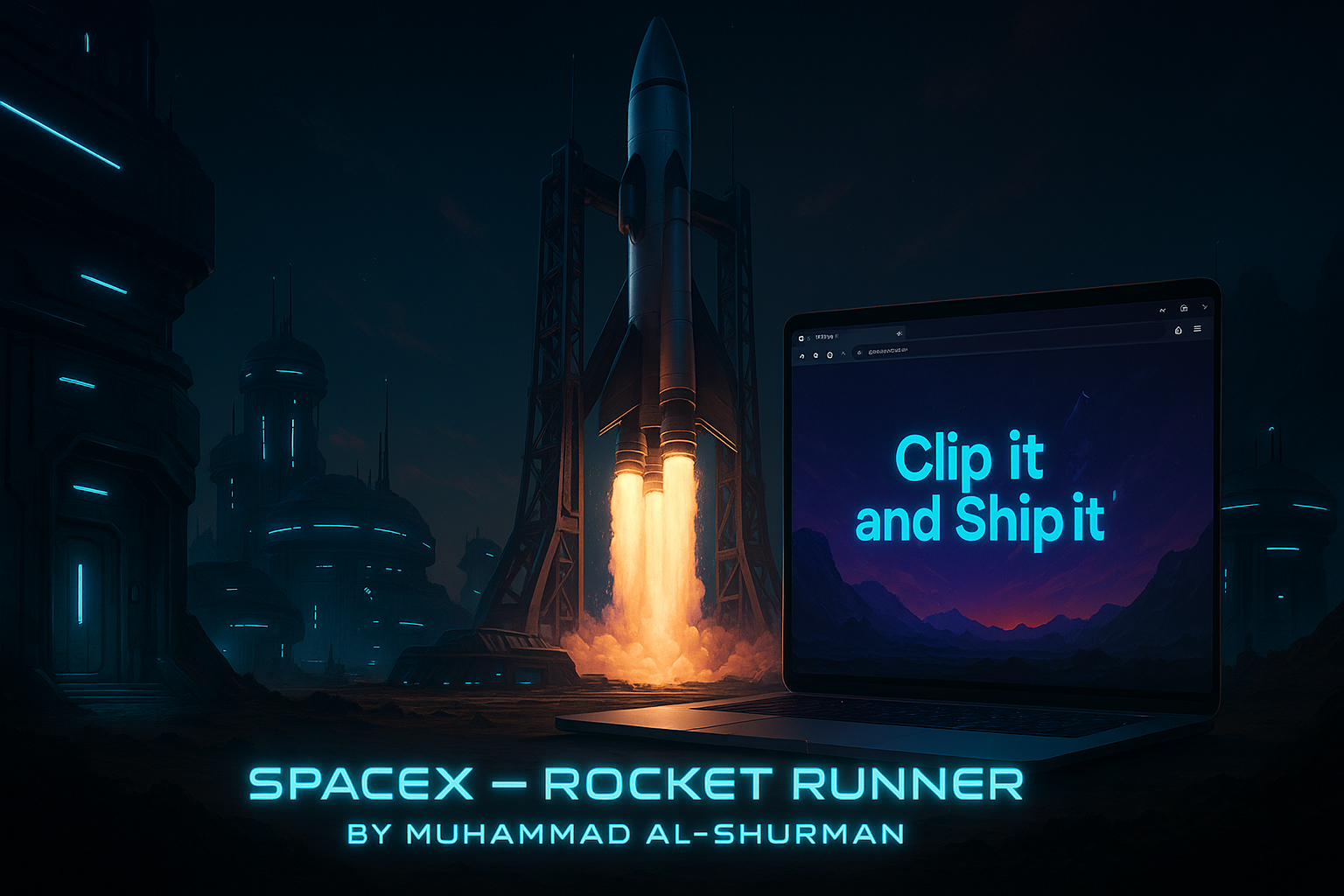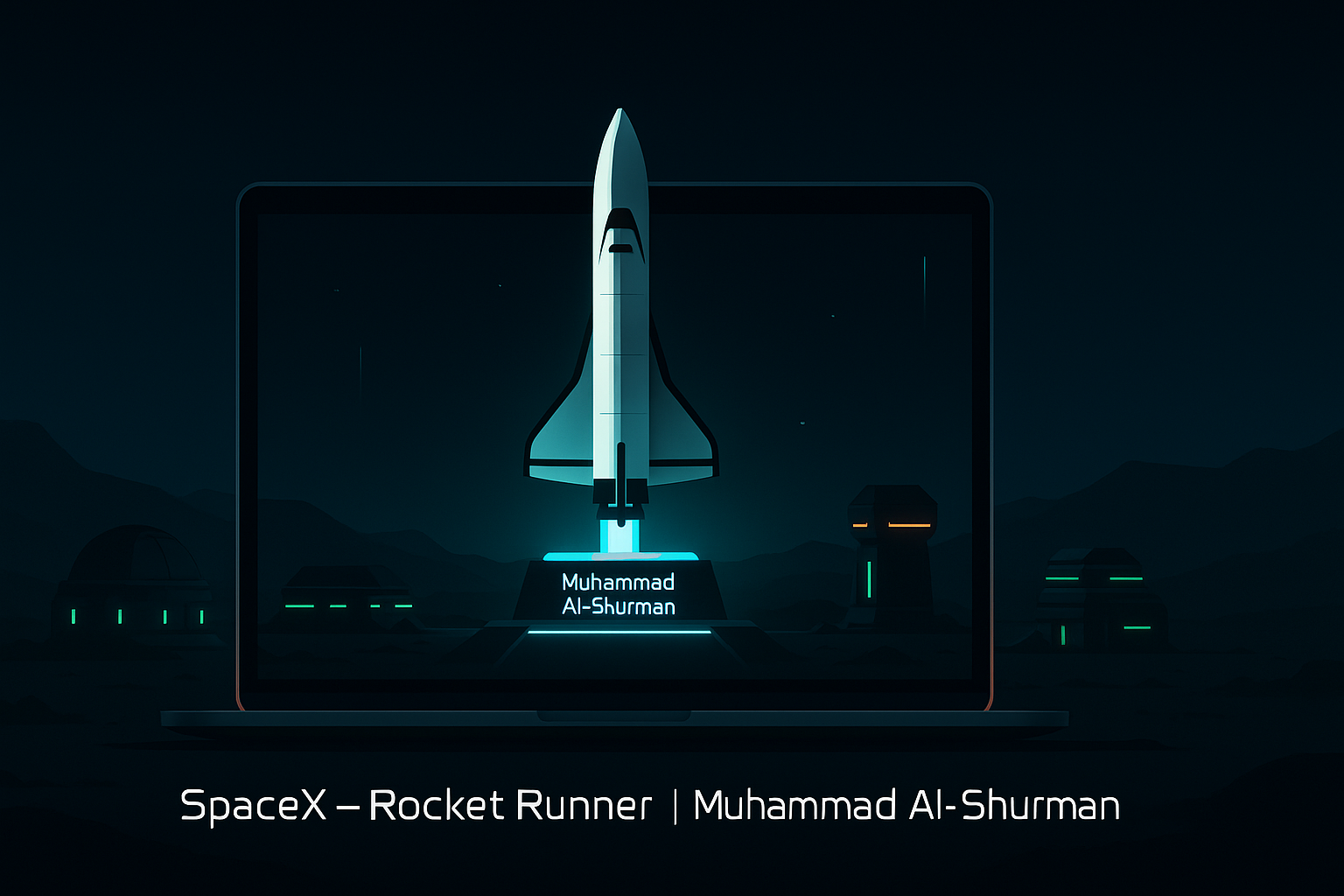Independent Project
March 2025
SpaceX (Rocket Runner)
Expertise
Gameplay Engineering, Physics Tuning, Level Design
Platforms
WebGL (Playable), Windows (Standalone)
Deliverables
- Playable demo & level pack
Links
View on LinkedIn
Project Overview
SpaceX (Rocket Runner) is a Unity-built arcade game where players pilot a rocket through increasingly hostile courses—narrow gaps, rotating gates, and dynamic hazards—while unlocking upgraded hulls and engines. The loop is simple and sticky: survive, collect, upgrade, try again.
Note: a personal, fan-made project not affiliated with SpaceX; naming reflects the theme of space flight.

Execution
Systems & implementation
- Flight model: Rigidbody-based thrust/torque with tuned drag and clampable max velocities; fixed-step input for deterministic feel.
- Obstacles: rotating gates, moving asteroids, laser sweepers; timeline-driven patterns plus seeded randomness for replayability.
- Progression: coin shards → engine/handling/armor upgrades; ScriptableObject configs for level and item balance.
- Level building: modular lanes, spline-guided sections, checkpoint system, and dynamic difficulty ramps.
- UX & juice: Cinemachine camera, URP post-processing, hit stop, screen shake, trails/particles, and haptics (where supported).
- Content pipeline: addressable bundles, object pooling to minimize GC, and a simple save system for progress & cosmetics.
- QA & performance: Unity Profiler passes, CPU/GPU frame time targets, and GC allocation budgeting during gameplay.
Security & ops
- Sandboxed WebGL build with safe input handling; crash repros captured with logs and device stats.
- Automated build profiles (Dev/Release) with stripped assemblies and texture atlas sizing.
Results
Measurable outcomes
- Performance: median FPS ≈ 58 (WebGL) · CPU frame ≈ 7.8ms · GPU frame ≈ 9.2ms.
- Stability: crash-free sessions 99.7% on latest playtest; GC alloc per frame ≈ 0.9 KB.
- Package size: WebGL build size 32 MB after texture/mesh/Audio import tuning.
- Engagement: level 1 → 3 completion funnel 64%; median session length 11.5 min.
Before → After (snapshot)
Before: jitter on dense hazard clusters and occasional GC spikes. After: object pooling + trimmed materials → GC spikes ↓ 62% and steadier frame pacing.
